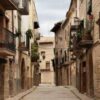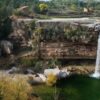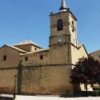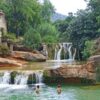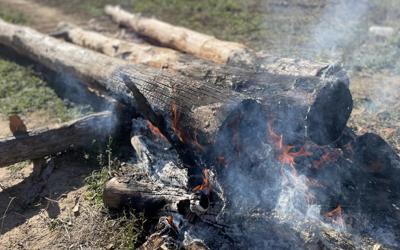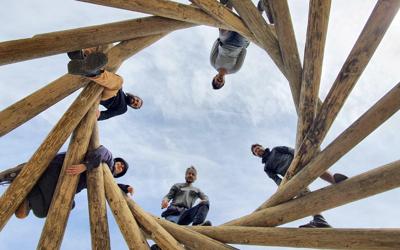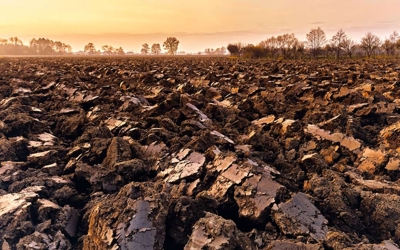Due to its advantageous climate, picturesque mountains, flowing rivers, and proximity to the sea, the Matarraña region has historically served as a strategic geographic location, drawing the attention of earlier civilizations. The roots of La Fresneda extend all the way back to the Bronze Age (1300 BC), witnessing the establishment of the first human settlements. Evidence of this rich history is unearthed in the Santa Bárbara hill (Cerro de Santa Bárbara) in La Fresneda, where various rock-carved sculptures, sacred geometry, and prehistoric astronomy engravings from that era have been discovered.
Perched atop the hill, the Chapel of Santa Bárbara (Ermita de Santa Bárbara) occupies an energetic vortex—a network of ley lines, or energy lines, connecting neighboring villages. The three sacred sites—Santa Bárbara in La Fresneda (Matarraña), San Cristóbal in Calaceite (Matarraña), and Sant Antoni in Horta Sant Joan (Terra Alta)—form a perfect triangle, symbolizing a profound energetic connection.
Measurements taken around the chapel reveal energy values ranging from 11,000 to 14,000 uB (Bovis units). To provide context, Earth’s neutral zones typically vibrate around 7,000 – 8,000 uB, similar to the vibration of an average human body. It is calculated that energetic values between 9,000 – 10,000 uB are conducive to deeper forms of meditation. As the chapel is situated on an energetic vortex, it boasts exceptionally high energetic values, making it an ideal location for such pursuits.
This awareness of energy is not exclusive to modern times. The ancients recognized these powerful energetic points, as evidenced by the rock-carved sculptures strategically placed in these locations. These sites often served as venues for rituals and ceremonies, attesting to the profound spiritual significance attributed to them by earlier civilizations.
An altar of sacrifice
This expansive “bath” likely served as a dedicated space for water-based purification rituals and ceremonies. The intrinsic purifying and rejuvenating properties of water were likely harnessed for such practices. Notably, the well-preserved steps leading into the “bath” offer a glimpse into the historical context of its use.
A trident
The trident frequently holds associations with themes of warfare, the cycles of life and death, and connections to water and hunting, owing to its historical use in fishing activities.
A womb
Recognized as a carved representation of a womb, this sculpture likely holds significance in connection to the worship of Mother Earth, the Goddess of fertility, suggesting that this site was of considerable importance to our ancestors.
An astral figure
An engraving of an astral figure (85 cm tall male figure with open arms) was found at the foot of the hill. The symbol is known as “the first fresnedino”. This also became the symbol of the village.
By approximately 1000 BC, a shift occurred in worship, with emphasis placed on the male figure, relegating the symbol of Mother Earth to a secondary role. Despite this, an engraving at the base of the hill, considering the height factor associated with the divinity of Mother Earth, suggests an evolving perception of “divinity.”
The discovery of the engraving led to its subsequent reburial, and the exact location was deliberately kept undisclosed to safeguard the sacred symbol.
A sacred spiral
Originating from the 1980s-90s, the spiral is situated at the convergence of the Hartmann and Curry lines. This spiral serves as a focal point for various activities, including meditation, walking, chanting, music, energetic cleansing, or the recalibration of pendulums.


